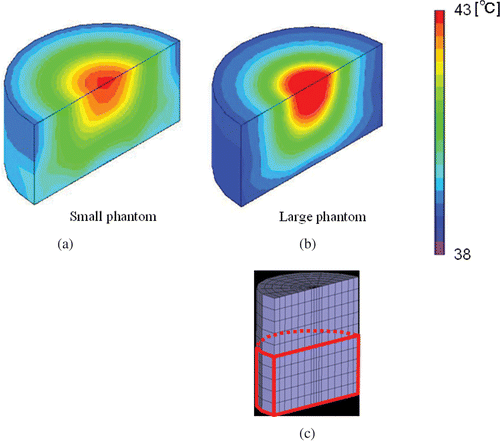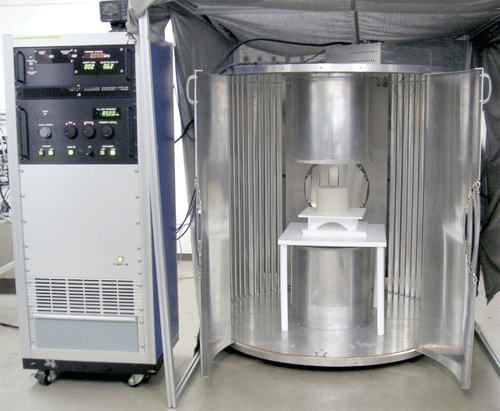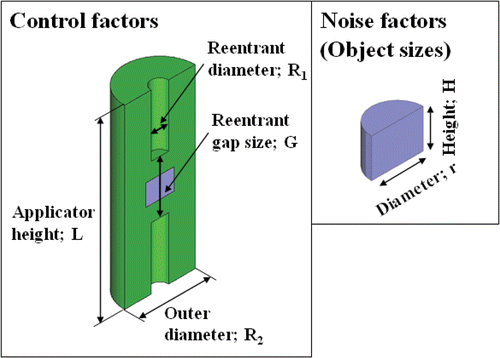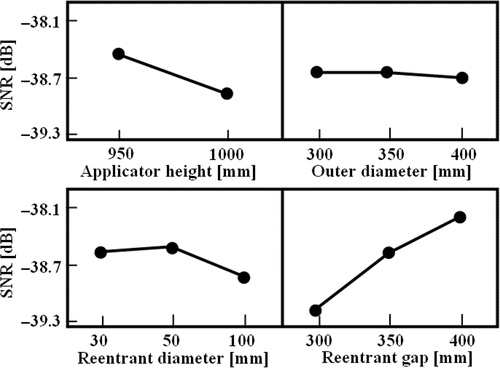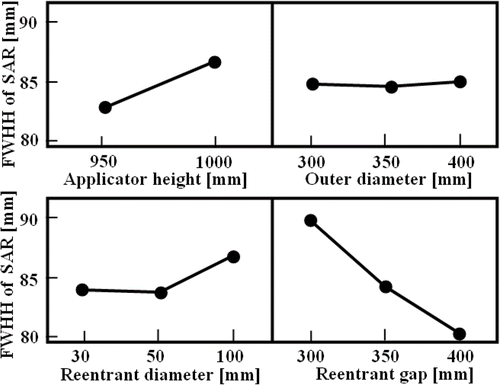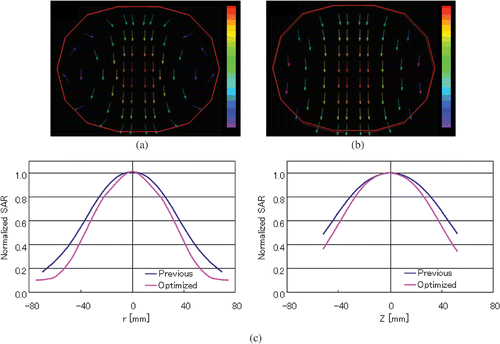Figures & data
Figure 2. Cross section of applicator and electromagnetic field distribution of the lowest (TM010) mode in reentrant cavity.
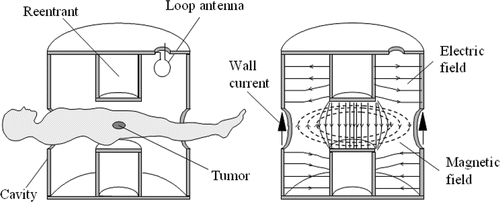
Figure 3. Outline of electric field distributions in (a) reentrant cavity and (b) RF capacitive heating system.
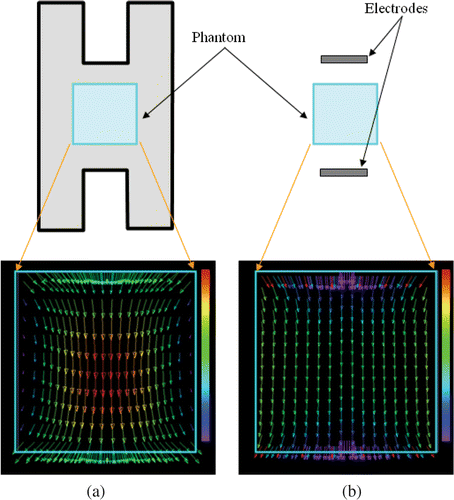
Table I. Taguchi's orthogonal L8 matrix (Example).
Table II. Levels of control factors and degenerated noise factors.
Table III. Taguchi's orthogonal matrix array (L18 orthogonal array).
Table IV. Electric parameters used in 3D-FEM simulation.
Figure 5. Definition of SAR distribution along the radical and long-axis directions in the phantom (a) used for the evaluation of heating characteristics.

Table V. Thermal parameters used in calculation of temperature distribution.
Figure 10. Temperature distributions inside (a) small and (b) large phantoms, which correspond to the lower part of the phantom indicated by the red line in (c), after heating for 20 min with RF power adjusted for a SAR value of 20 W/kg at the center of the phantom.
